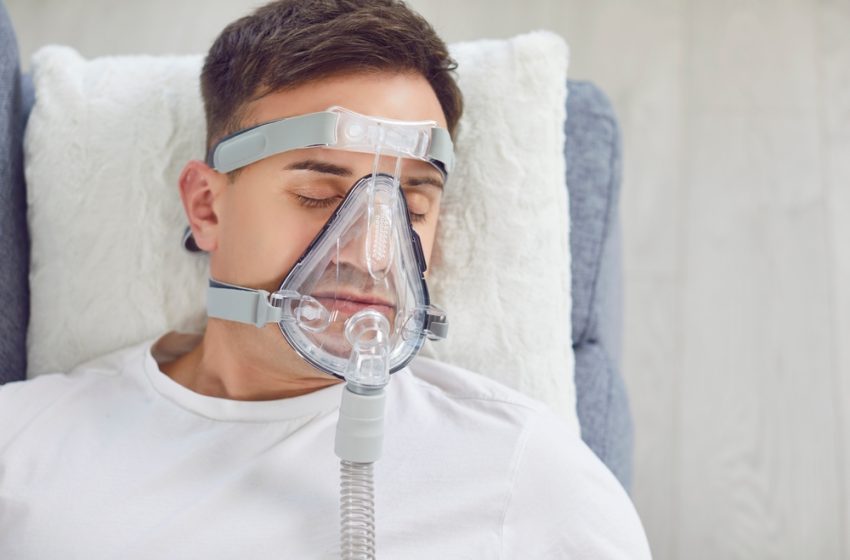The Long-Term Benefits of CPAP: What Happens to Your Body Over Time?

Continuous Positive Airway Pressure (CPAP) therapy is widely recognized as the gold standard treatment for obstructive sleep apnea (OSA), a condition where breathing repeatedly stops and starts during sleep. While CPAP is often prescribed for its immediate benefits—such as preventing nighttime airway blockages, reducing snoring, and improving sleep quality—its long-term effects on overall health are equally significant. Exploring the effects: Body changes after CPAP machine treatment are integral to understanding the positive influence it exerts on sleep and overall health.
Over time, consistent CPAP usage can profoundly impact the body by not only improving sleep but also reducing the risk of serious health complications like heart disease, stroke, high blood pressure, and diabetes. CPAP therapy helps stabilize oxygen levels, enhances cognitive function, boosts daytime energy, and promotes mental well-being, leading to a longer, healthier life. Understanding these long-term benefits underscores the importance of adhering to CPAP therapy as a transformative tool in improving both sleep and general health outcomes.
This guide entails all the details regarding CPAP long-term benefits and what impact it imposes on an individual’s overall health and well-being. Keep skimming until the very end to explore some invaluable insights!
Understanding CPAP Machines—What They Are and How They Work: An In-Depth Insight
A CPAP machine, or Continuous Positive Airway Pressure machine, is commonly used to treat sleep apnea. This device provides a steady flow of air through the nose and/or mouth, helping to keep the airways open during sleep. Also, it provides a specific pressure that allows one to breathe conveniently throughout the night.
Furthermore, CPAP therapy is often the first-line therapy for most of the individuals affected with obstructive sleep apnea. Additionally, sleep apnea is a condition characterized by repeated pauses and disruptions in breathing that result in sleep interruptions throughout the night. A CPAP machine works by delivering a steady stream of air through a mask that covers the nose or both the nose and mouth, helping to keep the airway open and preventing breathing interruptions.
Moreover, individuals who are prescribed CPAP therapy often wonder how their bodies will respond over time. CPAP therapy is generally regarded as safe and offers numerous benefits, including improved sleep quality, reduced snoring, lower daytime fatigue, and decreased blood pressure.
What Does a CPAP Machine Consist Of?
A typical CPAP machine may consist of the following parts that help to regulate air for better and smoother breathing throughout the night:
- A mask fits the nose and mouth.
- Straps to secure the mask on face.
- A tube connects the mask to the machine’s motor for seamless breathing.
- A motor that pushes air into the tube.
- An air filter to clean the air before it reaches the nose or mouth.
While a typical CPAP machine may only consist of the above-mentioned parts, some of the machines may also be accompanied by additional features. These features may include heated humidifiers and adjustable air pressure settings, for more personalized comfort.
CPAP is just one type of Positive Airway Pressure (PAP) device. Other types of PAP devices include:
- Auto CPAP: This model automatically adjusts air pressure based on the breathing needs to keep the airways open.
- Bi-level PAP: This device uses two different air pressures—a higher pressure for inhalation and a lower one for exhalation.
- Auto-bilevel PAP: It automatically adjusts both the inhalation and exhalation pressures for more precise control.
- Adaptive Servo-Ventilation (ASV): Designed for individuals with certain types of central sleep apnea, ASV monitors the breathing patterns and adjusts the pressure to stabilize breathing. It can also deliver breath when needed.
These variations offer different solutions depending on the type and severity of sleep apnea, ensuring users receive the most appropriate and effective treatment for their condition.
The Prolong Benefits of CPAP—Explained
CPAP therapy is one of the most effective treatments for obstructive sleep apnea (OSA), a condition that affects millions of people worldwide. While many individuals experience immediate relief from symptoms such as snoring, interrupted sleep, and daytime fatigue, the long-term benefits of CPAP go far beyond these short-term improvements. Below, we have discussed some of the most impactful long-term benefits of CPAP therapy;
- Enhanced Cardiovascular Health
OSA is closely linked to an increased risk of cardiovascular problems, including high blood pressure, heart disease, and stroke. When untreated, OSA can cause blood pressure to spike during the night as the body struggles to receive enough oxygen.
Therefore, long-term CPAP use helps to reduce this risk by maintaining open airways and providing a steady oxygen flow during sleep. This ultimately results in stabilized blood pressure and reduced risk of heart attacks or strokes.
Furthermore, the overall heart function improves as the heart no longer needs to overcompensate the oxygen deprivation.
- Diminished Risk of Stroke
One of the most serious consequences of untreated sleep apnea is the increased risk of stroke. Sleep apnea causes frequent oxygen deprivation, which can trigger an inflammatory response, increase blood clotting tendencies, and lead to elevated blood pressure—all contributing factors to stroke.
However, prolonged use of CPAP reduces oxygen deprivation events during the night while sleeping. Also, CPAP helps to lower the risk of hypertension and blood clots in the brain due to reduced oxygen supply. Lastly, it improves overall brain and vascular health, reducing the risk of strokes.
- Blood Sugar Control
People with OSA often have higher insulin resistance, which can lead to or worsen type 2 diabetes. The intermittent lack of oxygen during sleep disrupts glucose metabolism, causing blood sugar to spike. CPAP therapy helps in enhancing insulin sensitivity in the body. Furthermore, it reduces the risk of developing diabetes in the long run.
- Improved Cognitive Functioning of the Brain
Untreated OSA often leads to cognitive decline, memory issues, and difficulty concentrating due to poor sleep quality and nighttime oxygen dips. Over time, this can affect a person’s ability to function in daily life, impairing work performance and personal relationships. With long-term CPAP use one may experience reduced brain fog and mental clarity.
Moreover, other cognitive functions such as memory, problem-solving, and decision-making may also be improved over time. Also, the risk of developing dementia or Alzheimer’s disease is lowered due to better oxygenation.
- Stable Weight
OSA often leads to weight gain, which can worsen the condition and create a vicious cycle. Poor sleep affects hormones that regulate hunger and metabolism, causing increased cravings and reduced energy levels for physical activity. Long-term CPAP therapy helps break this cycle by simply improving sleep quality and regulating appetite-related hormones, enhancing energy levels, and supporting weight loss through maintaining a regular and consistent exercise routine.
- Enhanced Energy Levels and Daytime Alertness
One of the most noticeable immediate benefits of CPAP therapy is the boost in daytime energy levels, which continues to improve with long-term use. As the body receives adequate oxygen during sleep, it enters deeper sleep stages, resulting in reduced daytime fatigue or sleepiness and increased alertness or focus.
Moreover, it helps to increase energy for daily activities by promoting uninterrupted sleep. Also, it enhances overall mental and physical performance.
- Overall Improved Sleep Quality
OSA doesn’t just affect the individual—it also impacts their partner. Loud snoring, gasping, and restless sleep can disrupt the sleep of those sharing the same bed. With long-term CPAP use, one may ensure less snoring, snorting, or breathing interruptions. Also, it helps to improve sleep for both partners.
Furthermore, it becomes a source of quality sleep that promotes stable relationships and enhances household well-being.
Read Also: The Effects of Sleep Deprivation on Your Body
To Conclude
CPAP therapy provides profound long-term benefits that extend beyond just mitigating and combatting the symptoms of obstructive sleep apnea. From enhancing cardiovascular health and improving cognitive function to stabilizing weight and boosting mental health, the consistent use of CPAP transforms the quality of life for those affected. In addition to this, it prevents the development of serious health complications and supports sustained improvements in energy levels, mood, and overall well-being.
Furthermore, by committing to long-term CPAP use, one may invest in future health and overall well-being. It’s more than just a solution for better sleep—it’s a pathway to better heart health, sharper cognitive function, improved mood, and a higher quality of life. Over time, the benefits of CPAP therapy will accumulate, helping to feel more energetic, healthier, and happier every day. Take control of your health. Seek professional consultation through telehealth for sleep apnea diagnosis and opt for the right treatment to manage and combat sleep issues.
One step taken towards the right path today will bring you a healthier tomorrow!

